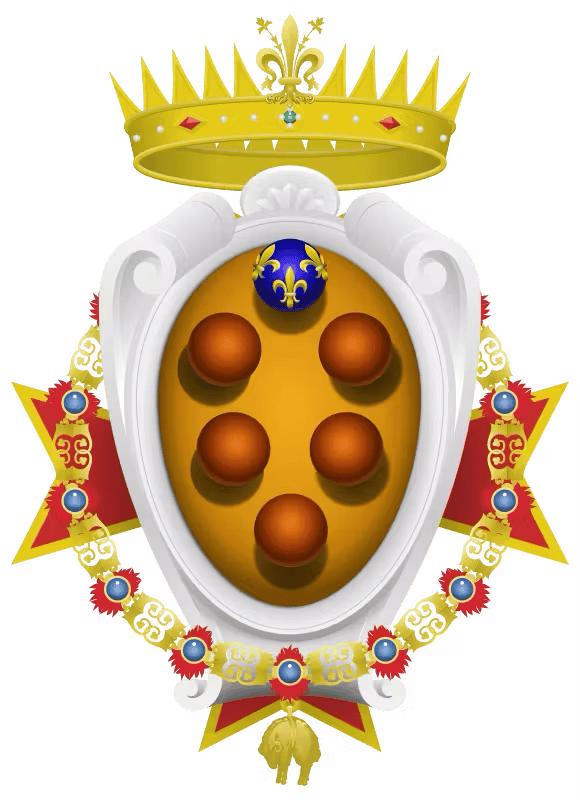Among the curious things to tell about Palazzo Vecchio – second residence of the Medici – some are truly bizarre.
Here are some singular facts that are part of the history of this magnificent secular palace.
The hidden portrait of Michelangelo
On the facade of Palazzo Vecchio, on the Uffizi side, one of the stones shows the profile of a man.
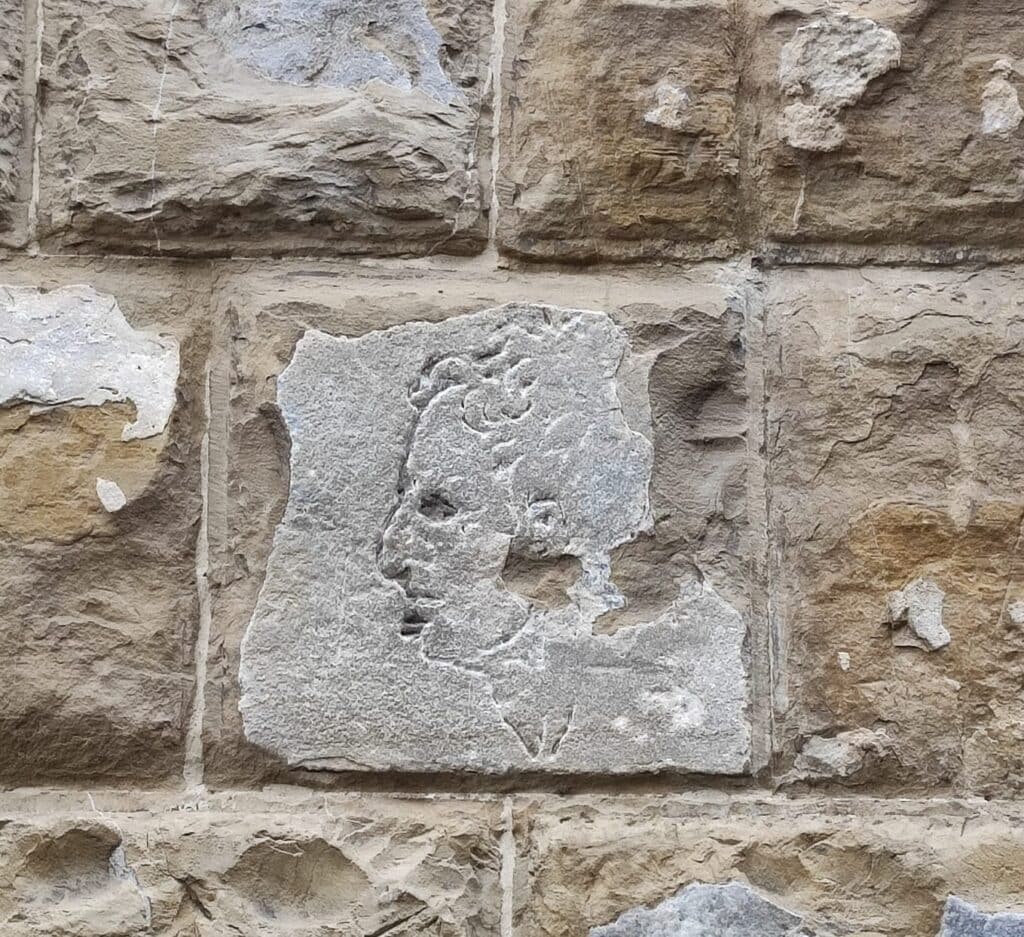
It is probably a passer-by who began to disturb Michelangelo while he was working on the head of the David, and the artist, out of boredom or to appease his anger, would have portrayed him here… he would have caricatured him better.
The Salone dei Cinquecento and the Battle of Anghiari
The Salone dei Cinquecento, inside Palazzo Vecchio, before Vasari, had been frescoed by Michelangelo and Leonardo da Vinci. The latter had frescoed a Battle of Anghiari, but with the restructuring of the Salone the frescoes have disappeared.
According to a theory, Leonardo’s Battle of Anghiari is hidden under one of the large frescoes made by Vasari, the Battle of Marciano in the Chiana Valley, because on a green banner is written in minuscule characters ‘SEEK, YOU SHALL FIND’.
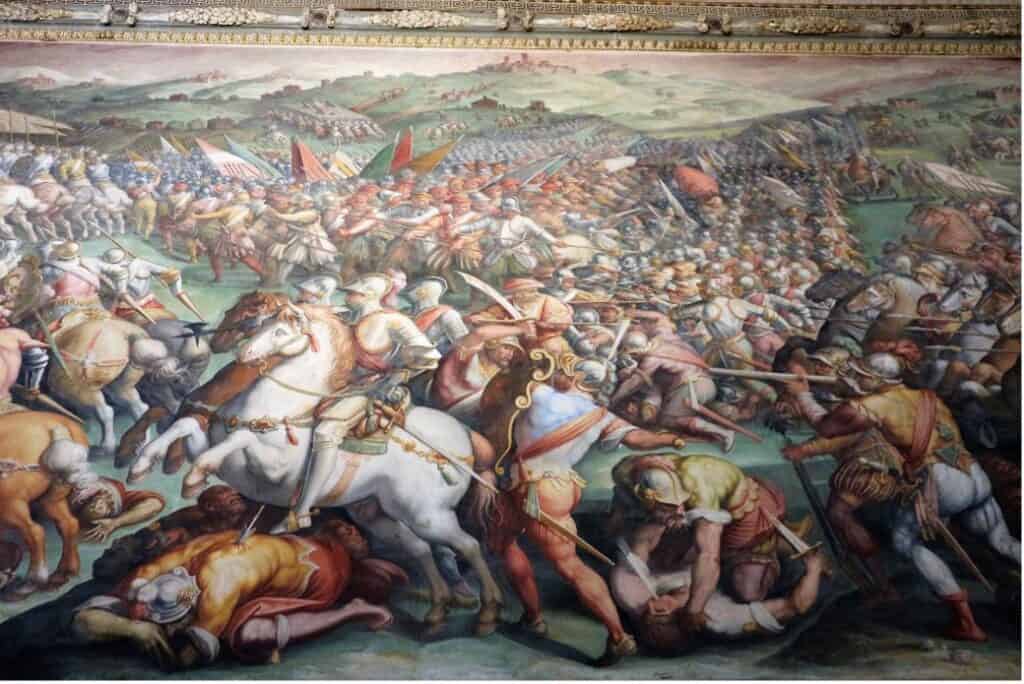
Given this, Leonardo’s Battle of Anghiari could be under Vasari’s painting.
Lorenzo the Magnificent and the giraffe
In the hall of Lorenzo the Magnificent, in the frescoed cross-vaulted ceiling, Lorenzo the Magnificent is depicted receiving embassies from the most powerful foreign states of the time.
Among these is a giraffe, a sign that the Medici’s commercial relations at the time reached as far as the Mediterranean coasts.
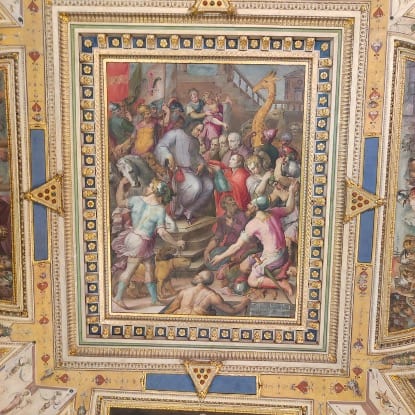
Lorenzo the Magnificent and the giraffe
The dog and its business
In one of the walls of the Hall of Leo X there is a fresco showing a dog while it does its business in front of Palazzo Vecchio during an important religious and civic ceremony.
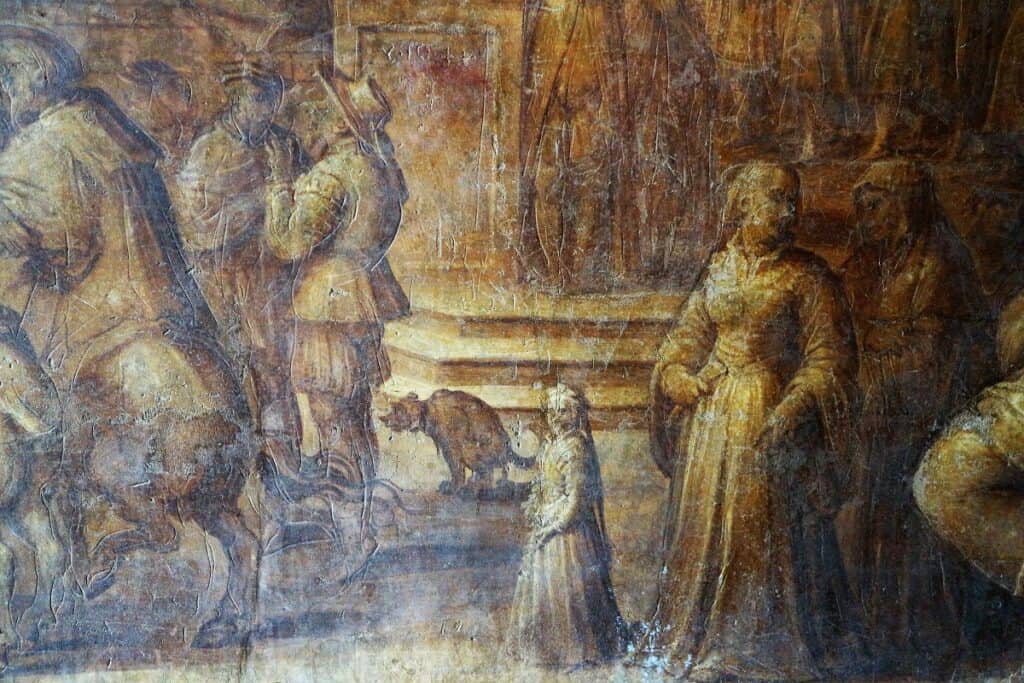
The author of the fresco is a Flemish painter, Jan van der Straet, known in Italy as Giovanni Stradano. And the Flemings are known for their attention to detail, the realism of situations in choral scenes, in an effort to capture as much variety and ‘seize the moment’ as possible.
The lions of Palazzo Vecchio
In front of the facade of Palazzo Vecchio is a copy of the Marzocco: this is a lion, a symbol of the strength and power of the Medici family.
And also on Piazza della Signoria, on the two sides of the Loggia dei Lanzi, there are two statues representing two lions, one from Roman times and the other created during the Renaissance period in the style of the Roman lion.
There are also stone lions with rather threatening expressions in the inner courtyard of Palazzo Vecchio.
In fact, from the 13th century until 1550, real lions were actually kept in the basement underneath the Palazzo Vecchio! As a reminder of that right behind the building there’s Via dei Leoni.
